STUDENT ACHIEVEMENT AND TECHNOLOGY
According to YourDictionary.com, the definition of Technology is the science or knowledge put into practical use to solve problems or invent useful tools. Technology has been prevalent in classrooms across the nation. Millions of dollars has been spent on technology for both teachers and students alike. However, the following question still remains:
YourDictionary.com. (2015). Technology. Dictionary Definitions. Retrieved (11/04/2015) from http://www.yourdictionary.com/technology
STUDENT ACHIEVEMENT STRATEGY PERCENTAGES
Robert Marzano of the Mid Continental Regional Education Laboratory, (McRel study) identified the top ten strategies that research linked to improved student achievement. Marzano’s book, Classroom Instruction that Works, that provided the underlying pedagogy promoted in the “No Child Left Behind” national initiative in the early 2000s.
Infuse comparisons, contrasts, classifications, analogies and metaphors – 45%
Summarizing and note-taking – 34%
Reinforcing effort and giving praise- 29%
Homework and practice – 28%
Cooperative learning – 27%
Generating and testing hypotheses – 23%
Nonlinguistic representations (examples: graphic organizers, pictures, kinesthetic activity) – 27%
Setting goals and providing feedback – 23%
Vocabulary – 32%
Activating prior knowledge – 22%
Learning Connect Updates: Learning Connect has provided a preview of the upcoming tools to be available in the future. They are listed below:
PROJECT MANAGEMENT TOOLS – A series of tools ranging from establishing leadership roles and project goals, to creating project action plans and stakeholder presentations.
ENTREPRENEURSHIP TOOLS – A series of tools for students to begin their journey of constructing their own personal Small Business Portfolio, brick by brick, as a pre-requisite to an actual business plan.
CAREER TOOLS – Five Year Time Capsule to establishing career goals is available. Tools for Job Interviewing and Workplace Success are in the future.
WRITING TEMPLATE TOOLS – A series of current writing templates are available from pre-writing planning, opinion writing to storytelling and technical writing.
All these drafts will be continually modified, eventually published and aligned with Alexa to ensure successful implementation in the classroom. Any current classroom implementation and feedback from a classroom experience would be appreciated.
Learning is defined as . . .
“Learning is also due to input to the brain. Sensory information (e.g., aural, visual, and tactile information) enters the brain along multiple nerve receptors. Sensory input causes axons to react by budding, branching, and reaching out to other neurons, thus, leading to the development of new connections in the brain. If the information is novel, the brain needs to develop these budding new pathways. It is when an axon grows and meets up with another neuron that learning occurs. — Cercone, 2006.




